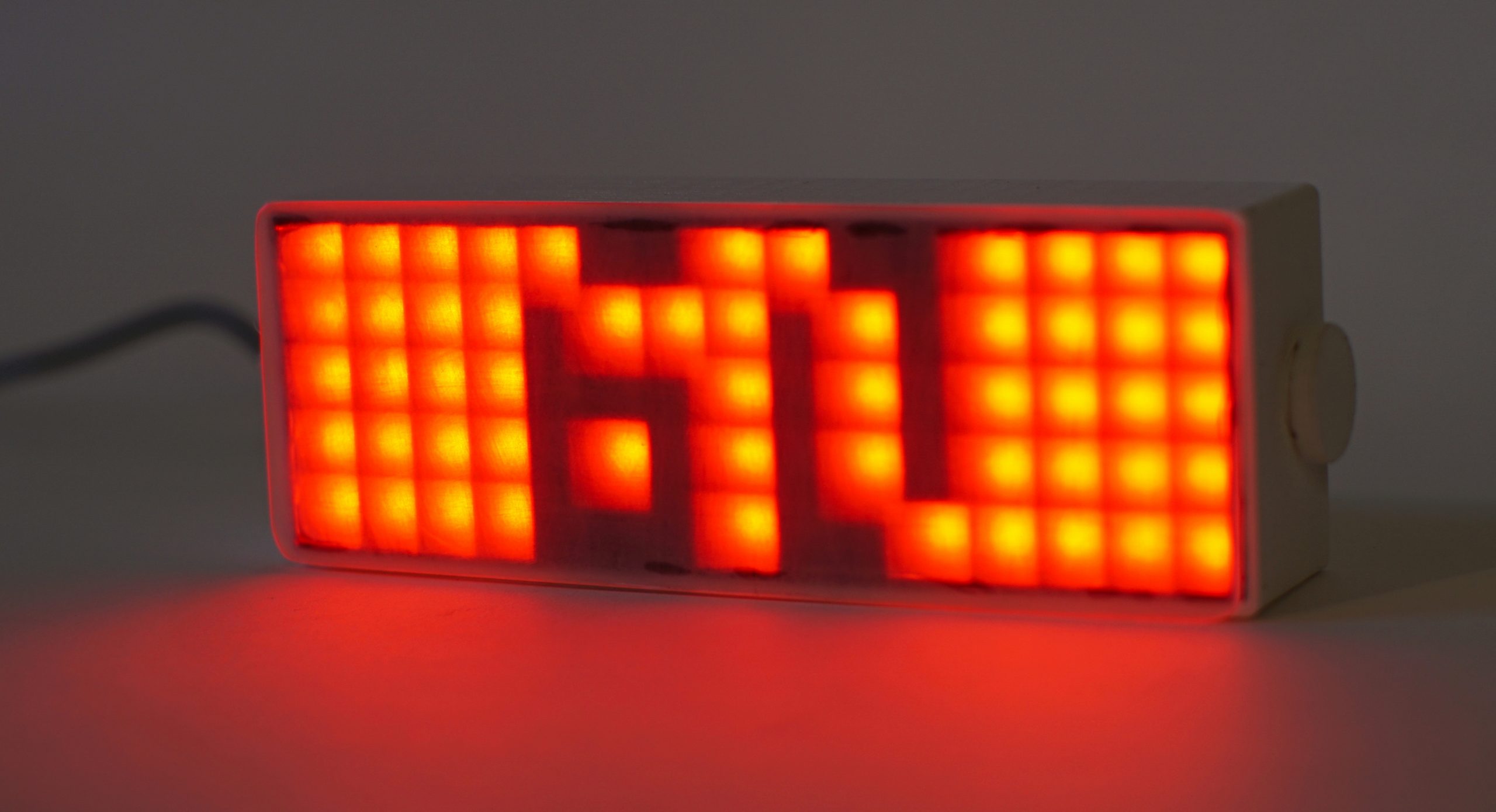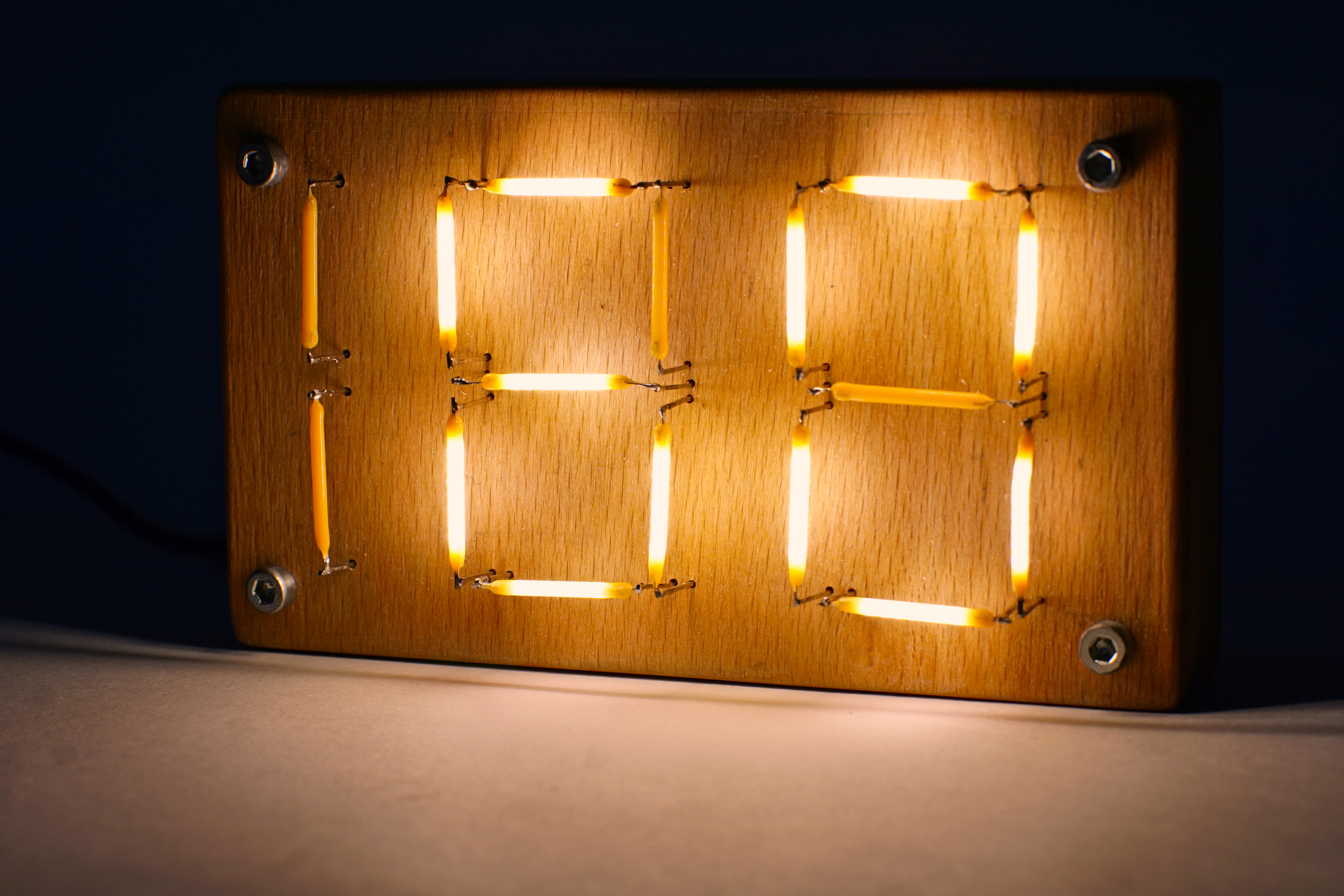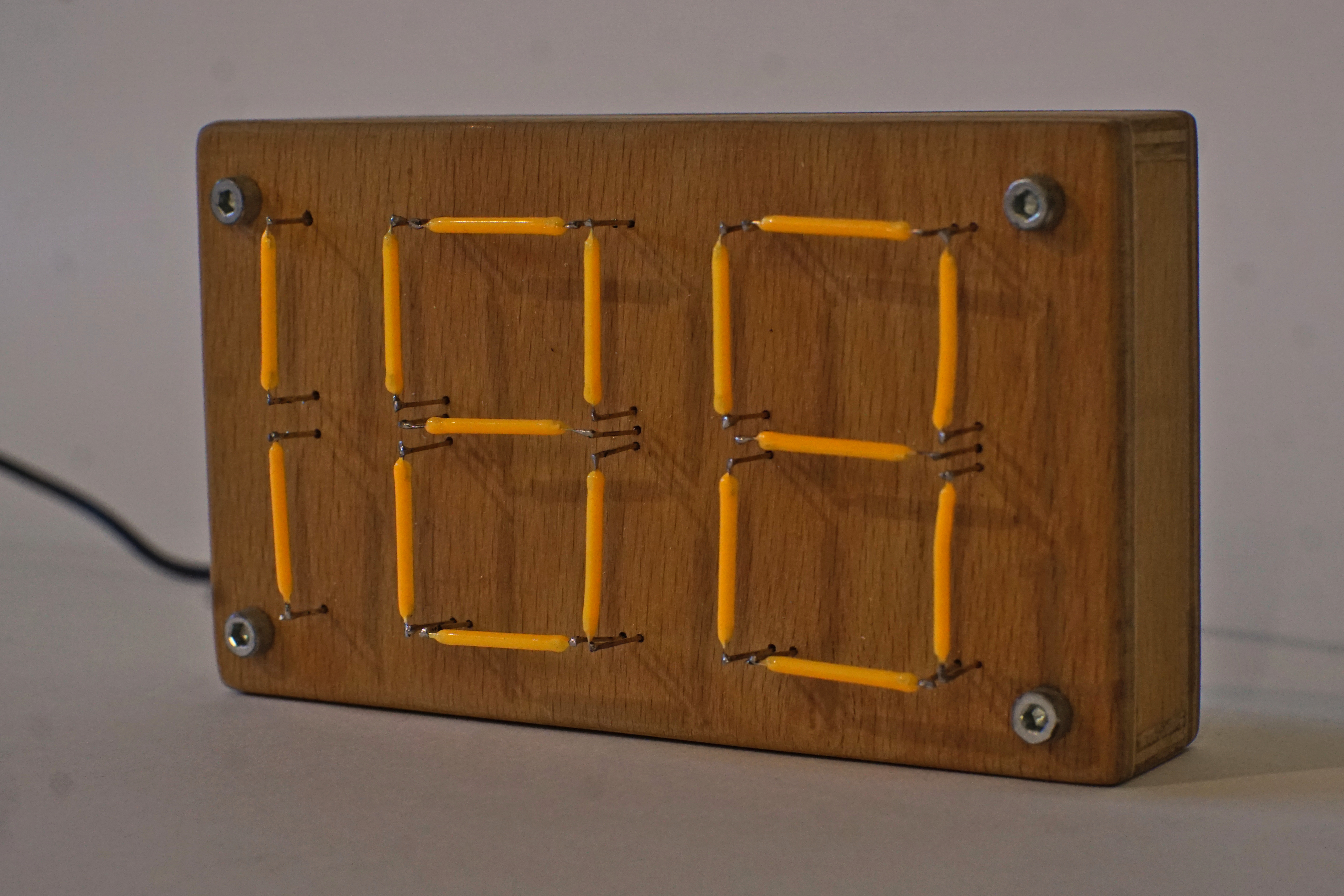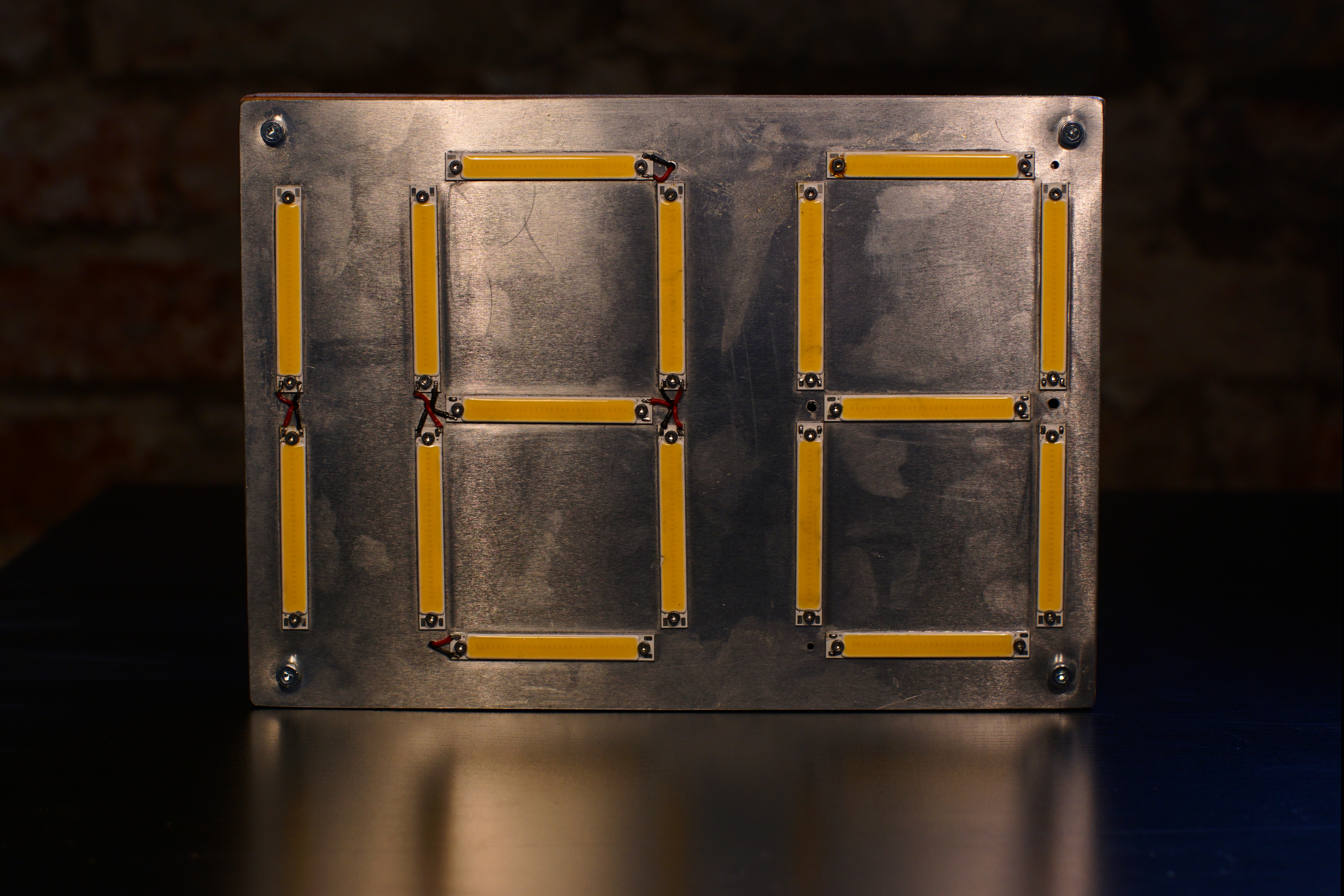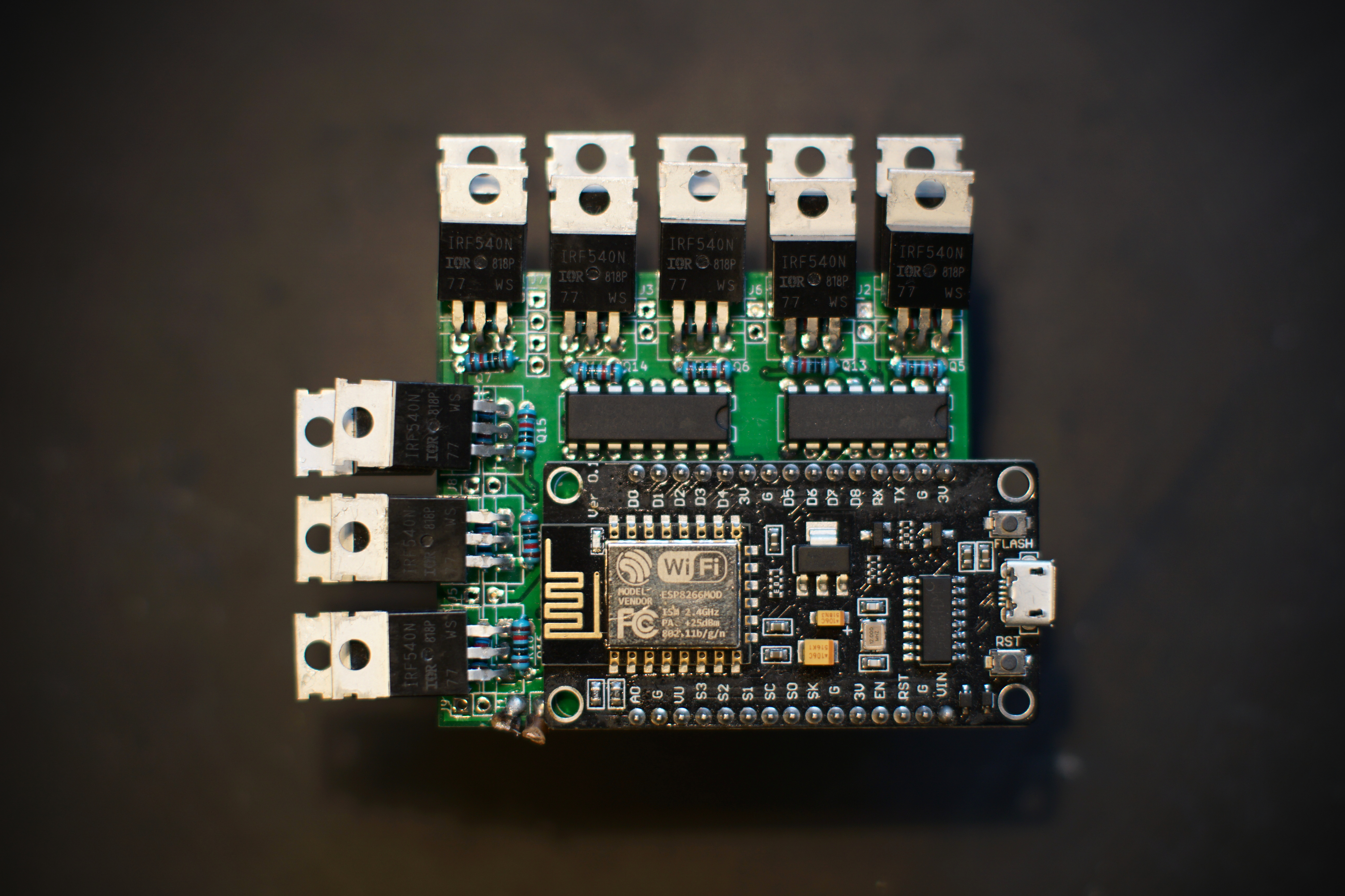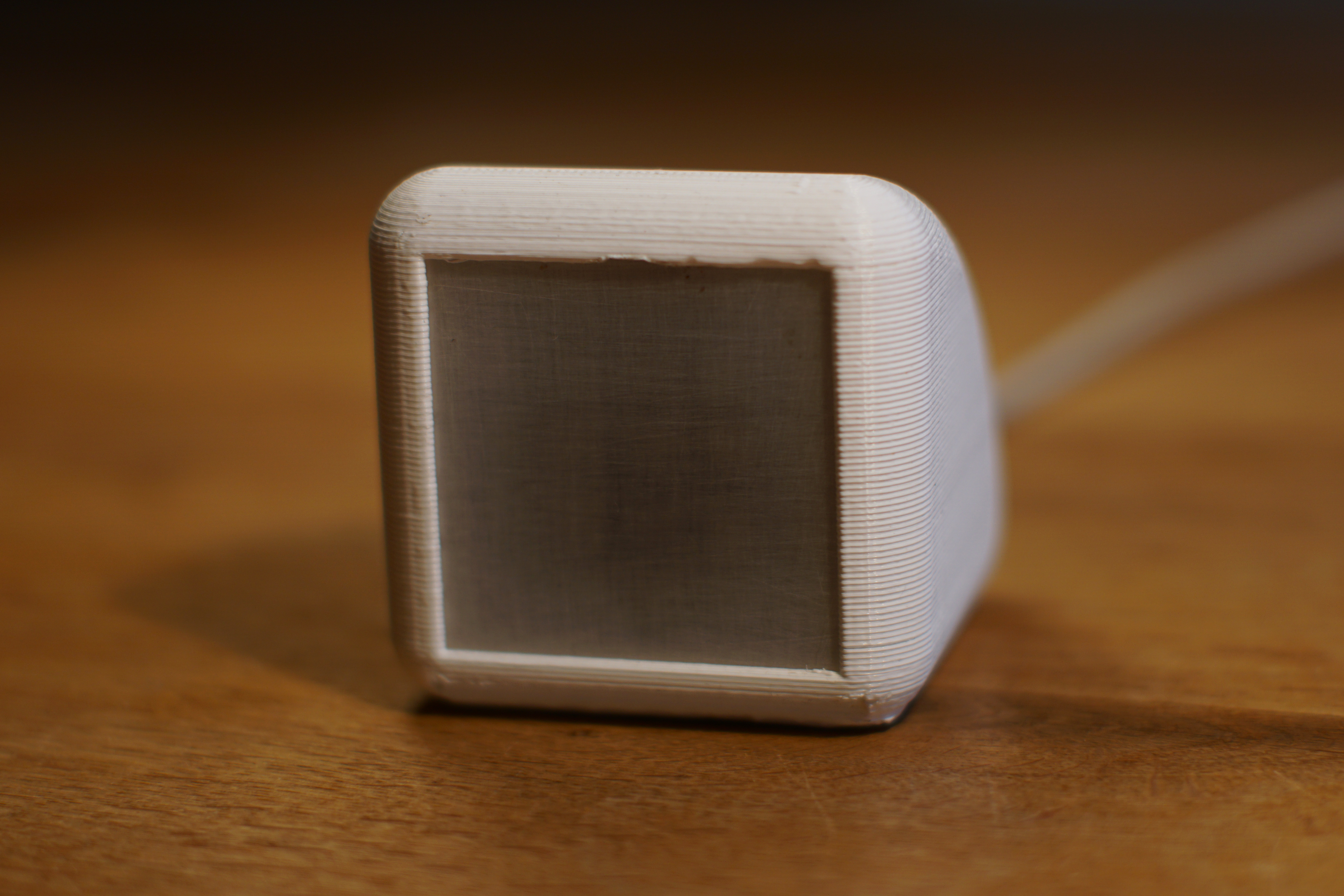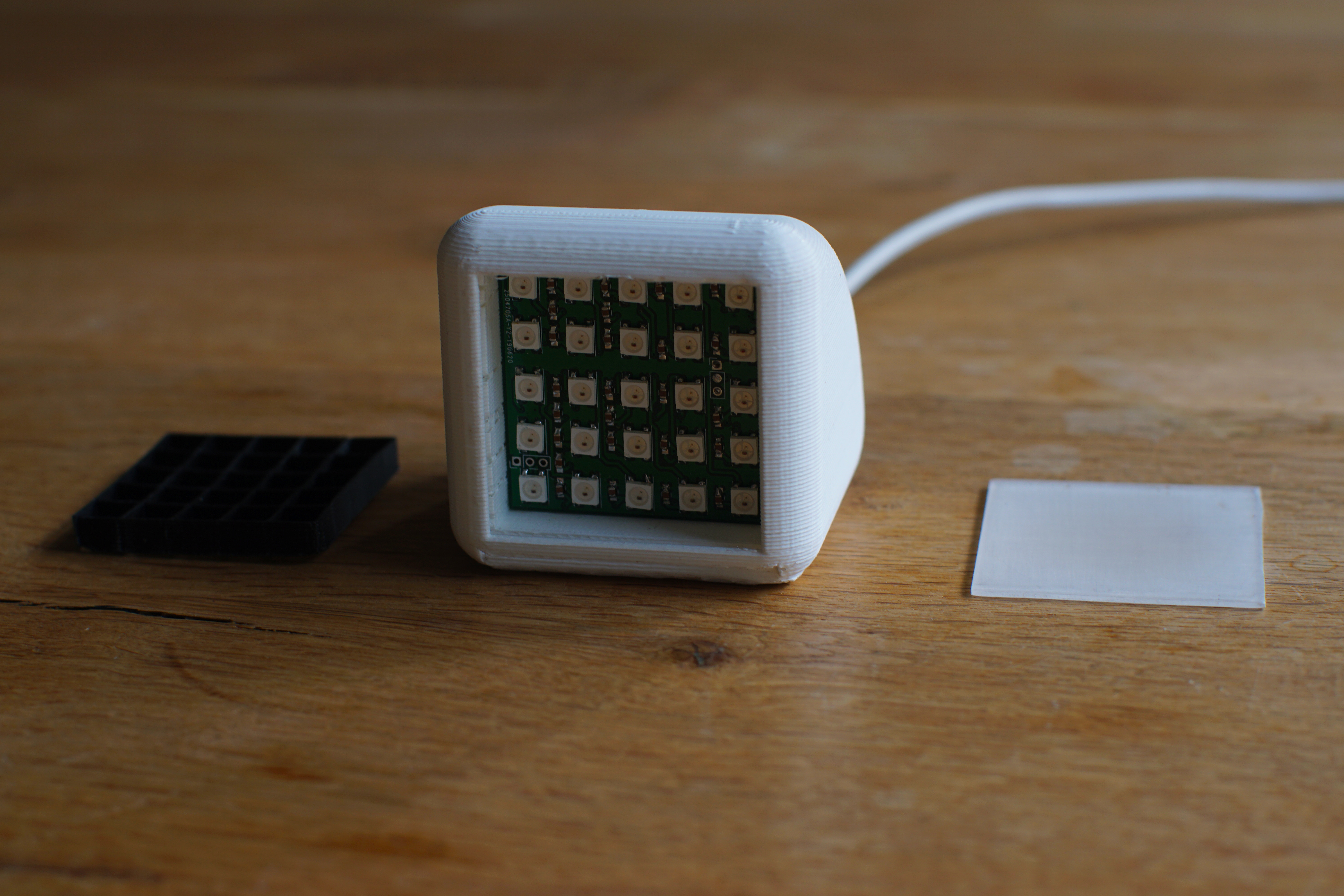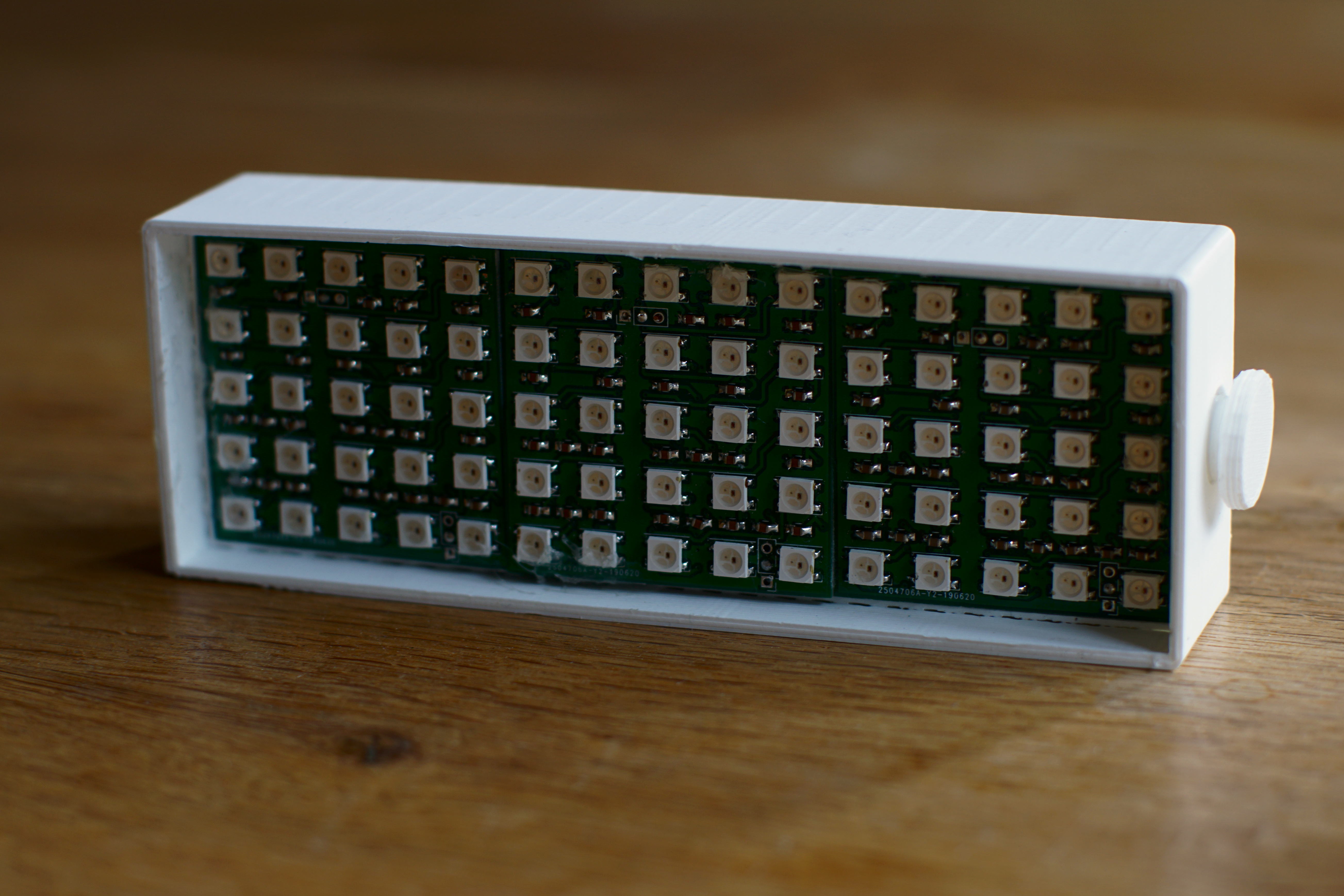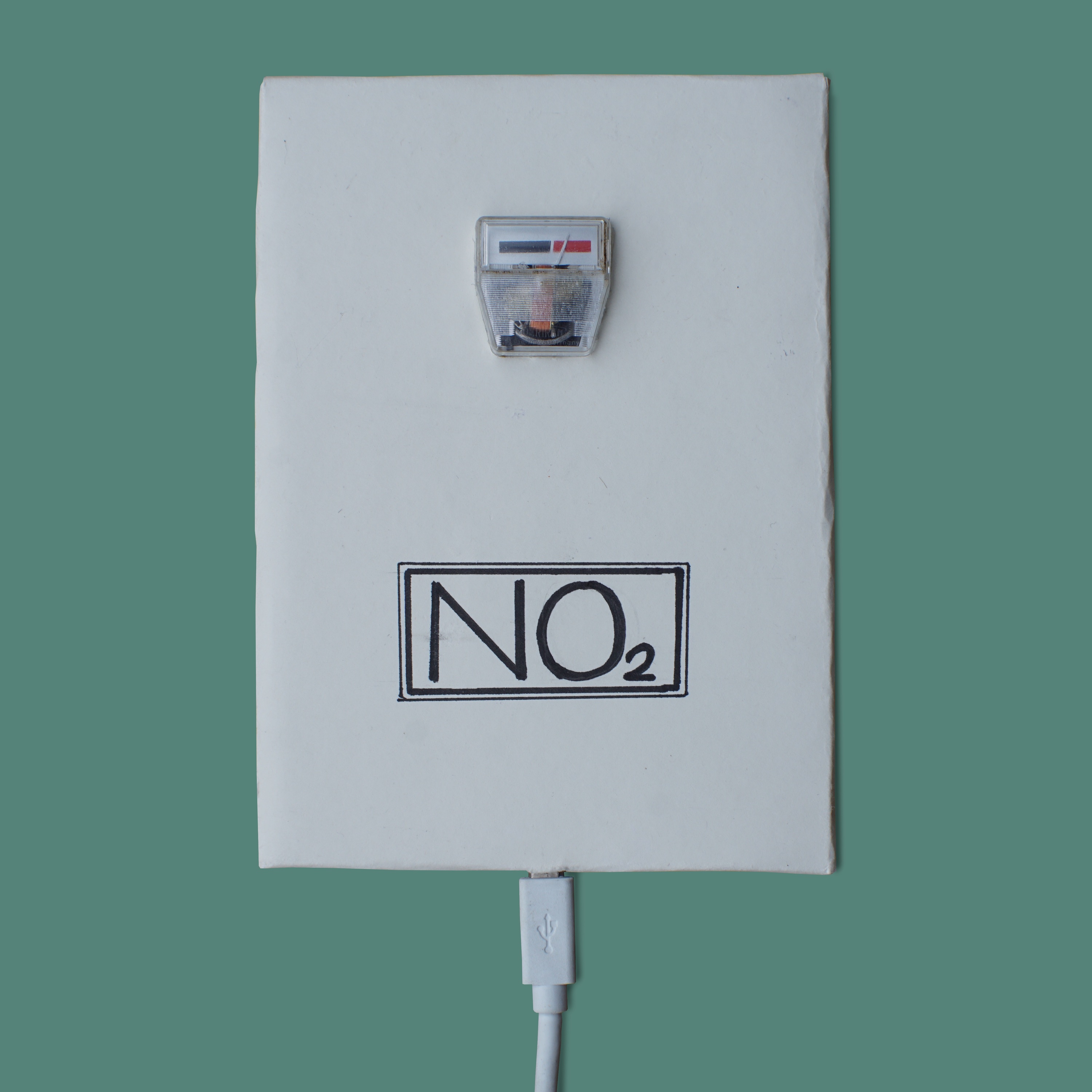Air pollution cannot be seen, tasted - and often not even smelled. That's why communication plays an important role. During a holiday job, my task was to come up with different ways of visualising nitrogen dioxide. Ideally, you would talk about NO2-values in the future just as naturally as we talk about temperature or air pressure today. To give you an overview: the EU limit value for nitrogen dioxide is 40 micrograms as an annual average. The data from a total of over 300 measuring stations in German cities is recorded every half hour by the state environmental agencies. In my four prototypes, I used NodeMCUs with an ESP8266, which connect to the Internet and request the current values. They also control the LEDs.
The obvious idea was, of course, to simply display the NO2 value as a number. Inspired by a YouTube video, I decided to use "LED filament", which is normally used in LED light bulbs. They are naturally bright and consume one watt at full brightness at a voltage of three volts. As these current levels cannot be controlled directly with a microcontroller, a MOSFET had to be connected upstream for each LED. The whole thing was packaged in a beech plywood housing, which was treated with linseed oil.
The result of another seven-segment display was around three times as bright. The 16 COB LEDs (chip on board) have a corresponding three watts at three volts and consist of many small LEDs on a circuit board, which is covered with yellow diffuser material. The housing is also made of wood - but an aluminium front panel was chosen to distribute the dissipated heat better. To save pins, I worked with shift registers on my custom MOSFET board. The brightness can be adjusted using a wooden rotary switch on the back of the housing.
Instead of an exact value via digits, you could simply display when the limit value is exceeded or not reached. Like a traffic light, the screen a shows a red animation, if the values are above 40 micrograms per cubic meter of air, and shows a green animation, when they are below. This resulted in a 3D-printed housing based on a mini tube TV that displays the two color values. The display of this "weather station" is 5×5 cm in size and consists of 25 pixels (WS2812B LEDs). Above it is a grid and a roughened plexiglass pane as a diffuser.
What can you always use? Exactly: a clock. This is how the fourth study on the visualization of NO2 was created in the form of an alarm clock. The housing was again created using a 3D printer. The display consists of three of the self-designed 5×5 LED boards. The grid and the roughened Plexiglas pane are again located above it. Due to the distance of 2-3 millimeters to the grid, the individual pixels on the screen overlap optically and give a diffuse but pleasant overall picture. There is a rotary switch on the side with which the individual functions can be controlled. Depending on the current NO2 value, two digits are displayed in different colors in "clock mode". If the NO2 value is below the limit value of 40 micrograms per cubic meter of air, the first two digits (hour display) are green and the rear digits (minute display) are red. If the NO2 values are above 40 micrograms, the colors swap and red comes first as a warning. In a second function, in "NO2 mode", you can display the exact live value of the selected measuring station. Here too, the screen has the same color scheme (red/green). Last but not least, there is of course an alarm function. However, my watch does not send a sound signal as an "alarm", but a very bright, pulsating white light. It wakes me up, even if it was late the night before ;-)
A display does not always have to light up. Under the motto "upcycling", an analog display from an old radio was used for the fifth prototype. Perfect as a gift, this version takes the form of a 5mm-thin paper postcard. In addition to the analog indicator, it contains a button, a Bluetooth-enabled microcontroller and a micro USB socket. After a one-time configuration via a WLAN login dialog, whereby Internet access and the desired measuring station must be entered, the postcard runs in plug'n play mode.
